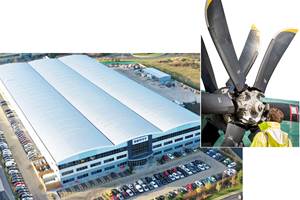Promising, incremental change
There’s been no getting around, lately, the pre-rollout hoopla and excitement surrounding the scheduled debut of the first Boeing 787 Dreamliner.
There’s been no getting around, lately, the pre-rollout hoopla and excitement surrounding the scheduled debut of the first Boeing 787 Dreamliner in July,(see “Boeing 787 Update” under “Related Content,” at left). And certainly the attention is warranted, given the depth and breadth of carbon fiber composites use on the craft. It’s easy, though, in the glare of the 787, to overlook other emerging applications and markets we cover here in CT, which, while not as glamorous, may prove comparably promising.
A case in point is auto manufacturing. One of the holy grails for the composites industry — production-volume automotive body panels — remains tantalizingly out of reach, but the quantity and quality of R&D work in this field, covering everything from materials to tooling to processing, is voluminous and encouraging. Unlike airplane manufacturers, though, carmakers rely on speed of production using inexpensive materials — hence the popularity of processes like injection molding, and hence the struggles of processes like RTM. Still, we’ve heard some carmakers say that if a composites molding process can get below the two-minute cycle time, then a whole world of possibilities opens up. And that cycle time is within reach.
In the meantime, we watch avidly as the industry inches forward, experimenting with carbon and glass in a variety of automotive applications. The most recent and highest profile example is the Tesla Roadster, covered this month in “Engineering Insights” (see “Related Content”). It’s a compelling combination of carbon fiber body panels on a sporty, high-speed all-electric vehicle. It lacks some of the hallmark attributes of an everyday car — it costs $100,000 and only 2,000 will be made annually — but employs creative engineering and high-performance carbon fiber combined with emerging battery technology that makes it more than just another high-priced joyride. In fact, one can see with the Roadster an evolution that might, with a little more creativity, bring it to within reach for more than just the well-heeled.
Another market that bears watching is deepsea oil exploration. Our cover story this month (see “Deepwater ….” under “Related Content”) brings you up to speed on where, how and to what extent composites are finding use on off-shore drilling platforms, in applications ranging from risers to emergency escape boats to equipment shrouds. While this market has been an evolving one for composites for some time, the rising cost of crude oil demands that drillers be even more cost-conscious and creative when it comes to materials use on rigs. Composites have and will continue to function effectively in this environment.
Percolating in the background of these two markets — automotive and oil exploration — is the steady drumbeat of environmental, resource and cost consciousness that is forcing many manufacturers (your customers) to rethink when and how materials are used and how they contribute to product sustainability. The electric vehicle, declared dead just a few years ago, is enjoying a cautiously optimistic rebirth, and the volatility of the energy markets demands that oil explorers be more careful about how they harvest product. It’s clear that composites do and will have a big role to play.
Related Content
Materials & Processes: Fabrication methods
There are numerous methods for fabricating composite components. Selection of a method for a particular part, therefore, will depend on the materials, the part design and end-use or application. Here's a guide to selection.
Read MorePlant tour: Dowty Propellers, Gloucester, U.K.
Transforming decades of design and RTM production reliability into more sustainable, next-generation composite propellers.
Read MoreMaterials & Processes: Fibers for composites
The structural properties of composite materials are derived primarily from the fiber reinforcement. Fiber types, their manufacture, their uses and the end-market applications in which they find most use are described.
Read MoreThermoplastic composites welding advances for more sustainable airframes
Multiple demonstrators help various welding technologies approach TRL 6 in the quest for lighter weight, lower cost.
Read MoreRead Next
Composites end markets: Energy (2024)
Composites are used widely in oil/gas, wind and other renewable energy applications. Despite market challenges, growth potential and innovation for composites continue.
Read MoreFrom the CW Archives: The tale of the thermoplastic cryotank
In 2006, guest columnist Bob Hartunian related the story of his efforts two decades prior, while at McDonnell Douglas, to develop a thermoplastic composite crytank for hydrogen storage. He learned a lot of lessons.
Read MoreCW’s 2024 Top Shops survey offers new approach to benchmarking
Respondents that complete the survey by April 30, 2024, have the chance to be recognized as an honoree.
Read More













.jpg;maxWidth=300;quality=90)












